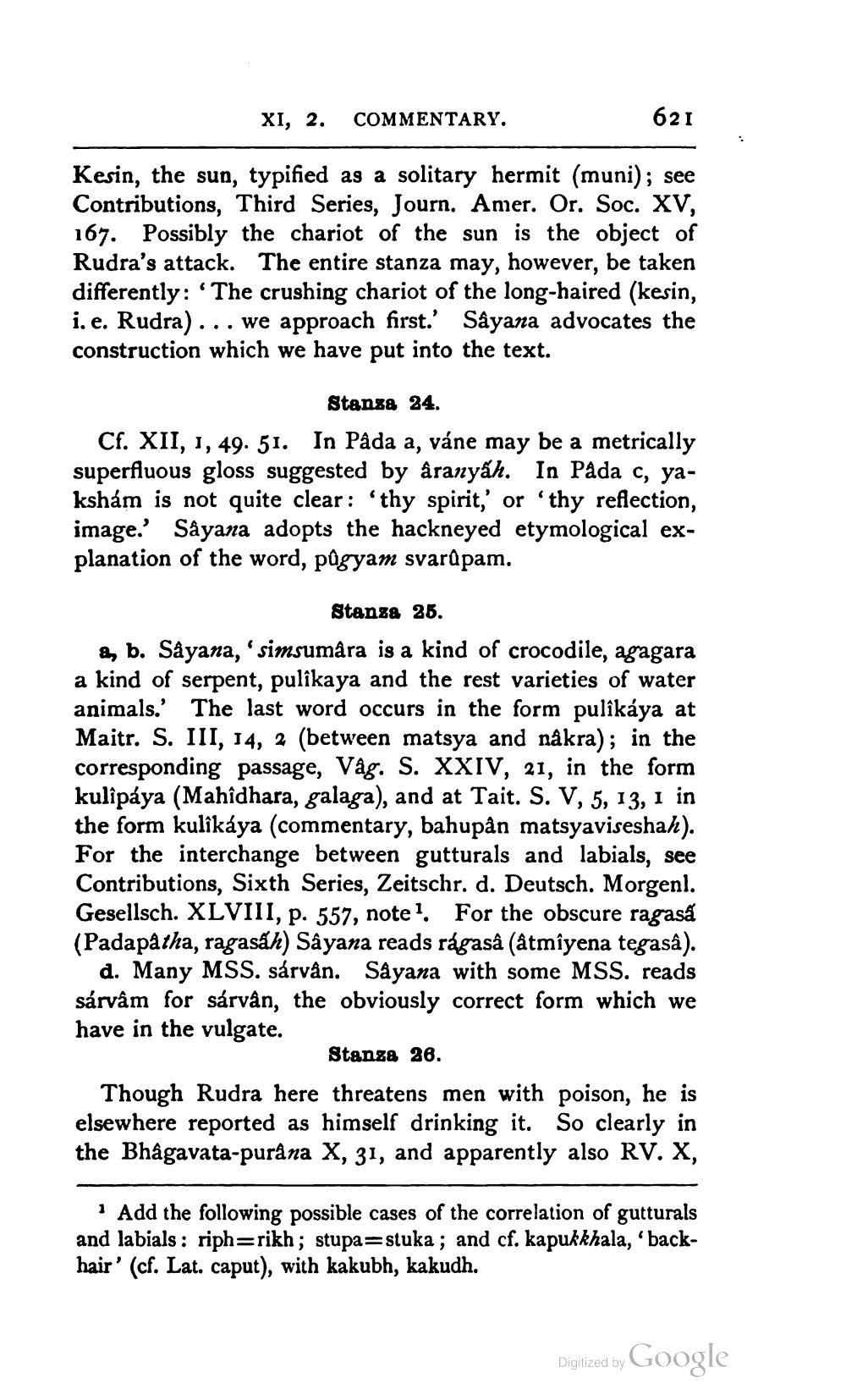________________
XI, 2. COMMENTARY.
621
Kesin, the sun, typified as a solitary hermit (muni); see Contributions, Third Series, Journ. Amer. Or. Soc. XV, 167. Possibly the chariot of the sun is the object of Rudra's attack. The entire stanza may, however, be taken differently: ‘The crushing chariot of the long-haired (kesin, i.e. Rudra)... we approach first.' Sâyana advocates the construction which we have put into the text.
Stansa 24. Cf. XII, 1, 49. 51. In Pada a, váne may be a metrically superfluous gloss suggested by aranyáh. In Pada c, yakshám is not quite clear : "thy spirit,' or 'thy reflection, image.' Såyana adopts the hackneyed etymological explanation of the word, pügyam svarðpam.
Stanza 25. 2, b. Såyana, simsumâra is a kind of crocodile, agagara a kind of serpent, pulîkaya and the rest varieties of water animals.' The last word occurs in the form pulîkaya at Maitr. S. III, 14, 2 (between matsya and nåkra); in the corresponding passage, Våg. S. XXIV, 21, in the form kulipaya (Mahîdhara, galaga), and at Tait. S. V, 5, 13, 1 in the form kulikaya (commentary, bahupân matsyaviseshah). For the interchange between gutturals and labials, see Contributions, Sixth Series, Zeitschr. d. Deutsch. Morgenl. Gesellsch. XLVIII, p. 557, note? For the obscure ragasa (Padapatha, ragasah) Sâyana reads ragasâ (åtmiyena tegasa).
d. Many MSS. sárvån. Sayana with some MSS. reads sárvam for sárvân, the obviously correct form which we have in the vulgate.
Stanza 26. Though Rudra here threatens men with poison, he is elsewhere reported as himself drinking it. So clearly in the Bhagavata-purana X, 31, and apparently also RV. X,
1 Add the following possible cases of the correlation of gutturals and labials: riph=rikh; stupa=stuka; and cf. kapukkhala, 'backhair' (cf. Lat. caput), with kakubh, kakudh.
Digitized by Google




